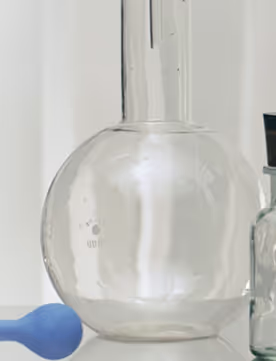In the simplest terms, inflammation is your immune system’s response to harmful stimuli. The problem can be external, such as a splinter in your finger, or internal, such as an invading virus. Either way, the immune response initiates biological processes that may cause noticeable symptoms such as pain, redness, and swelling. This kind of acute inflammation is an important defense mechanism to protect your body and trigger the healing process. (Source)
Chronic inflammation, though, is a more widespread immune response that may be harmful to your health. You may be able to reduce this kind of inflammation by choosing foods that have anti-inflammatory properties, and avoiding foods that may be pro-inflammatory. Read on to learn about 9 foods to include in your anti-inflammatory diet.
What Is Inflammation?
There are two kinds of inflammation: acute and chronic. Acute inflammation occurs in the presence of harmful stimuli. Once the body is healed, the cells responsible for the inflammation should either die off or migrate to another part of the body, and the inflammatory response should subside. Unfortunately, sometimes the resolution of an inflammatory response is compromised, leading to chronic inflammation. (Source)
Chronic inflammation poses a serious health threat because it is a risk for cardiovascular, metabolic, and neurodegenerative diseases. While acute inflammation is beneficial for removing short-term harmful stimuli, chronic inflammation may go on to cause damage to otherwise healthy tissues.
Sometimes chronic inflammation can arise because the original harmful stimulus cannot be removed. However, other times chronic inflammation arises from an autoimmune disorder where the body mistakes healthy cells for foreign pathogens, and launches a prolonged inflammatory response against them. (Source)
How Is Inflammation Triggered?
As soon as a threat is identified by the immune system, an inflammatory response is triggered, starting with the release of proteins called cytokines. Cytokines are messenger proteins that help other cells know what to do next. When inflammatory cytokines are released into the blood, this triggers greater blood flow to the affected area, making it easier for white blood cells to be recruited to the site of injury or infection. (Source)
In acute inflammation, the inflammatory response should decrease once the harmful stimulus is no longer present. However, as we’ve said, chronic inflammation is prolonged inflammation as a result of the stimulus not going away, or of the body’s own healthy cells being mistakenly attacked. (Source)
%25201%20(1).avif)
Symptoms of Inflammation
You may be familiar with the symptoms of acute inflammation, such as redness, heat around the affected area, swelling, pain, and loss of function. However, chronic inflammation exhibits a different set of symptoms.
Some of the most common symptoms of chronic inflammation include:
- joint or muscle pain
- chronic fatigue
- mental health changes (mood disorders, depression, anxiety)
- gastrointestinal problems (diarrhea, constipation, reflux)
- weight gain or weight loss
- frequent infections
(Source)
Can You Measure Inflammation?
Inflammation is regulated by inflammatory mediators, which are the signaling proteins that immune cells release in order to manage and maintain an inflammatory response. The amount of inflammatory mediators present in the blood can be measured to clinically diagnose chronic inflammation. (Source)
Cytokines are an example of some of the most common inflammatory mediators that are used as markers of inflammation. They are released early on in the inflammatory process, and their role is to recruit leukocytes (white blood cells) to the site of infection.
There are several different kinds of cytokines, both pro- and anti-inflammatory. Keeping the right balance between the various types is necessary to avoid acute inflammation becoming chronic. Excessive pro-inflammatory cytokines can exacerbate chronic inflammatory conditions and lead to tissue damage. (Source)
It is also important to remember that chronic inflammation is not a disease on its own, but is often associated with other diseases. Therefore, there is no one single way to diagnose chronic inflammation.
8 Foods for an Anti-Inflammatory Diet
While there is no immediate cure for chronic inflammation, changes in diet and lifestyle can greatly improve symptoms. In particular, many compounds found in plants have been shown to have potential anti-inflammatory benefits. (Source)
Below are 8 food options that are known for their anti-inflammatory properties. Unsurprisingly, many of these options are plant-based, making them easy to incorporate into many different diets.
Leafy Green Vegetables
Leafy green vegetables such as Swiss chard, spinach, and kale are full of vitamins A, C, and K, which have been shown to have anti-inflammatory properties. These vitamins also have antioxidant properties that can protect your cells from naturally occurring cell damage.
Antioxidants are important for protecting our cells from free radicals and oxidative stress. Free radicals are highly unstable molecules that can cause damage to nearby healthy cells. This damage caused by free radicals is referred to as oxidative stress.
Further, research has shown that an increase in oxidative stress can be linked with increased chronic inflammation. In order to keep free radicals under control, antioxidants slow down and inhibit the cells responsible for creating free radical cells. (Source, Source)
How to Include Leafy Greens in Your Next Meal
If you are not a fan of eating salads or raw leafy greens, why not try adding them to your next smoothie? Blending leafy greens with fruits such as bananas and berries will help mask their sometimes bitter taste while keeping their nutritional benefits.
%25202%20(1).avif)
Broccoli (and Other Cruciferous Vegetables)
Broccoli and other cruciferous vegetables such as Brussels sprouts and cauliflower are also rich in vitamins A, C, and K. However, they have the added advantage of sulforaphane, a phytochemical (naturally occurring plant compound) that has been found to block the inflammatory process, among other benefits. (Source)
How to Include Cruciferous Vegetables in Your Next Meal
When cooking cruciferous vegetables, try to avoid boiling them in water, as that can make some of the nutrients leach out. Use a little bit of oil in a pan instead, as cooking cruciferous vegetables in oil has been shown to preserve their phytochemicals. (Source)
Honey
Although honey may not seem like an impressive food, it contains plenty of nutrients and is particularly high in polyphenols. The specific composition of honey can differ depending on the type of bee that produced it and the floral source. However, all sources of honey have been associated with anti-inflammatory properties.
While the specific pathways are not yet clear, honey may improve inflammation by down-regulating the production of inflammatory cytokines while simultaneously stimulating the production of anti-inflammatory compounds in the blood. (Source)
How to Include Honey in Your Next Meal
The easiest way to include honey in your diet is to use it as your sweetener in place of white sugar.
%25205.avif)
Garlic, Onions, and Leeks
Garlic, onions, and leeks all belong to the allium family. Organosulfur compounds (OSCs) are commonly found in alliums, and research has shown that they also have powerful anti-inflammatory properties. Further, OSCs have the added benefit of potentially preventing or treating major diseases, including cancers, by influencing the chronic inflammatory processes. (Source)
How to Include Alliums in Your Next Meal
Alliums are a staple for almost any dish, and are well-loved for adding depth of flavor without resorting to too much sodium or additives. If you’d like to add more alliums to your diet, try this creamy chicken and leek soup.

.avif)
%20(1).avif)
%20(1).avif)

.avif)







%25208.avif)
%25204.avif)



.avif)

%2520(1).avif)


